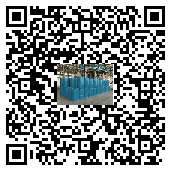Inkjet Dispersants: The Invisible Magic That Makes Colors Come to Life on Paper
Introduction: When Technology Meets Art
In the digital age, inkjet printing technology has evolved from simple document output to a core tool for precision manufacturing,
artistic creation, and industrial production. From home printers to ceramic inkjet printers, from 3D bioprinting to flexible electronics
manufacturing, breakthroughs in inkjet technology often stem from a seemingly ordinary yet crucial material: inkjet dispersants.
This "invisible magician" is quietly driving technological innovation in numerous fields.
I. Decoding Inkjet Dispersants: The "Social Mentor" of Pigment Molecules
Inkjet dispersants are essentially a composite system of surfactants and polymers. Their core functions are:
Steric hindrance: The polymer chains form a protective layer on the surface of pigment particles, preventing particle aggregation.
Charge regulation: Imparting equal charge to particles, utilizing electrostatic repulsion to maintain dispersion stability.
Wettability modification: Reducing surface tension between the ink, nozzle, and substrate, ensuring smooth jetting.
Modern dispersants have developed into three generations: anionic, nonionic, and high-molecular-weight block copolymers.
The latest products can achieve long-term, stable dispersion of nanoparticles.
II. Cross-Industry Application Panorama
1. Traditional Printing
Graphic Printing: In commercial inkjet printers,dispersants ensure that 0.1-10μm pigment particles do not clog
the nozzles during high-speed jetting, achieving a precision exceeding 1200 dpi.
Packaging Printing: Water-based dispersants enable food packaging inks to meet both migration testing standards and color saturation
requirements.
2. Industrial Manufacturing
Ceramic Inkjet:
In tile decoration, dispersants must withstand high-temperature sintering at 1200°C to maintain stable glaze color
Textile Printing: Dispersants in reactive dye inks help pigments penetrate fibers, achieving color fastness levels 4-5 after washing at 80°C.
3D Printing: Dispersants in photosensitive resins control the distribution of nano-ceramic particles, increasing interlayer bonding strength
by 30%.
3. Specialty Applications
Biomedical: In pharmaceutical 3D printing, dispersants maintain uniform release characteristics of APIs (active pharmaceutical ingredients).
Electronics: Dispersants in conductive inks ensure that silver nanowires form a dense conductive network (resistivity <10⁻⁶Ω·cm) on flexible
substrates.
Art Reproduction: The Louvre uses specialized dispersant technology to achieve 0.1mm precision color gradient control in microjet
reproductions of famous paintings.
III. Technological Evolution and Challenges
1. Environmental Revolution
EU REACH regulations are driving the use of water-based dispersants to replace solvent-based products. New bio-based dispersants
(such as modified cellulose derivatives) have achieved VOC emissions of <1g/L.
2. Nanoscale Trends
Quantum dot inks require dispersants with precise control at the 2-10nm scale.
3. Intelligent Response
pH/temperature-responsive dispersants enable on-demand adjustment of ink viscosity, automatically optimizing jetting performance
during the printing process.
IV. Future Technology Outlook
AI-Assisted Design: Predicting the Interaction between Dispersant Molecular Structure and Pigment Particles through Machine Learning
Self-Healing Systems: Developing Intelligent Dispersants that Automatically Repair Particle Agglomerations After Printing
Quantum Control: Using Graphene Oxide to Construct a Two-Dimensional Dispersion Platform for Single-Atom-Level Dispersion Control
Conclusion: The Power of Small Molecules
From Office Documents to Space Material Manufacturing, Inkjet Dispersants are Redefining the Boundaries of "Printing." In this nanoscale
world, every precise color reproduction stems from the perfect symbiosis of trillions of pigment particles and dispersant molecules.
With breakthroughs in materials science, this "invisible ink" may yet write even more industrial legends.


